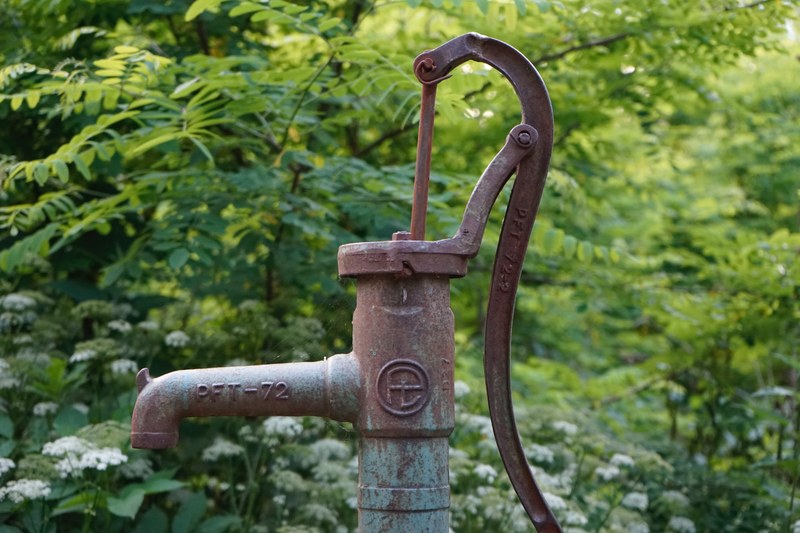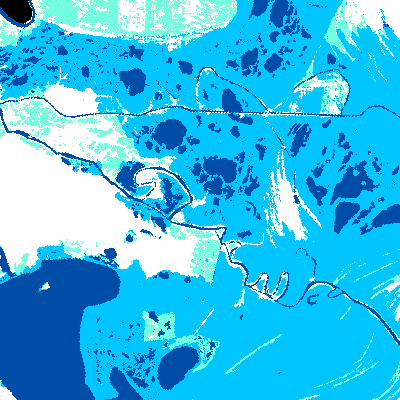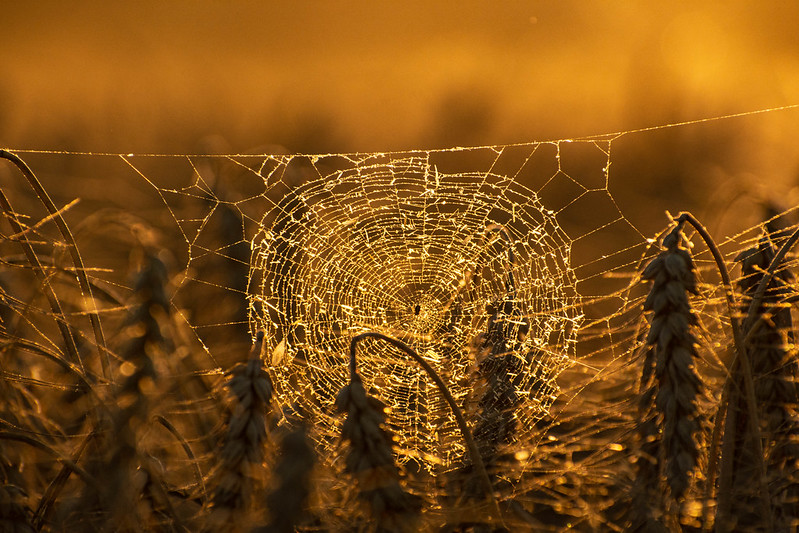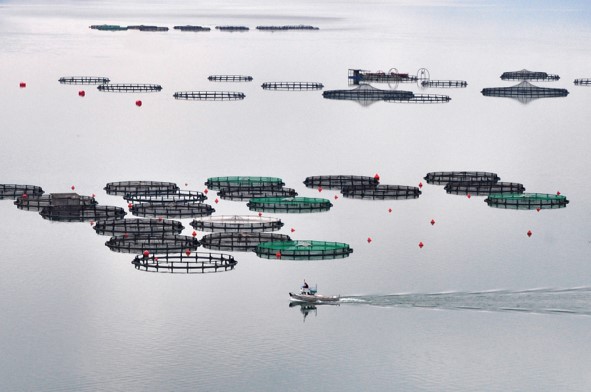All official European Union website addresses are in the europa.eu domain.
See all EU institutions and bodiesPeople, nature and the economy all need water and water is many things: a vital need, a local and global resource, a transport corridor, a climate regulator and home and provider to many species. Europe's rivers, lakes, seas and groundwater are under pressure from pollution, eutrophication, over-exploitation and climate change.
From melting glaciers, lakes, and rivers to ground water and seas, water is an interconnected and vital resource. Pollution, over-exploitation, physical alterations to water habitats and climate change continue to impact Europe's water bodies and life dependent on them.
Freshwater resources are finite. Europeans use billions of cubic metres of water every year for drinking, farming, manufacturing, heating and cooling, electricity generation, tourism and other service sectors. Population growth, urbanisation, pollution and the effects of climate change, such as persistent droughts, are putting a growing strain on Europe’s freshwater supplies and its quality.
Europe’s seas cover more than 11 million km2 and range from shallow, semi-enclosed seas to vast expanses of the deep ocean. They host a wide and highly diverse range of coastal and marine ecosystems with a large variety of habitats and species. Even though EU countries have managed to reduce some pressures, the conservation status of marine ecosystems also remains critical. Similarly, pollution, over-exploitation of marine resources and economic activities also impact marine life.
The European Union and its Member States have been putting in place policies and measures to improve water quality, reduce pollution and improve the state of aquatic ecosystems. In some cases, like the bathing water quality, drinking water and urban wastewater treatment, there have been remarkable achievements. In other areas, such as conservation of wetlands, plastic litter in seas, the latest trends continue to cause concern.
Compared with many parts of the world, Europe has still relatively abundant freshwater resources. However, these resources are not evenly distributed across the continent. In fact, according to our state of water report, water stress is already occurring in Europe, where the demand exceeds the available supply for a certain period. Water stress affects 20% of Europe's territory and 30% of the population every year, figures that are likely to increase in the future due to climate change.
- Only 37% of Europe’s surface water bodies achieved ‘good’ or ‘high’ ecological status, a measure of aquatic ecosystem health, under EU’s Water Framework Directive and only 29% achieved ‘good’ chemical status over the 2015-2021 period, according to data reported by EU Member States.
- Europe’s groundwaters fare better than surface waters, with 77% being in good chemical status and in terms of supply, 91% of groundwaters are reported to be in good quantitative status. But problems remain in terms of pollution by pesticides and nutrients.
- Despite freshwater abstraction declining by 15% in the EU between 2000 and 2019, there has been no overall reduction in the area affected by water scarcity conditions.
- Agriculture remains an important user and source of pollution. It was responsible for 59% of total freshwater use in Europe in 2017. 22% of Europe’s surface water bodies and 28% of the groundwater area are significantly affected by diffuse pollution from agriculture, both by nutrients and pesticides.
- Groundwater supplies 65% of drinking water and 25% of water for agricultural irrigation in the 27 EU Member States.
- Ocean acidity increased by 30% since the 1980s due to climate change, and models predict further acidification. Average sea surface temperature increased by between 0.2°C ad 0.5°C per decade since 1981.
Climate change is also projected to decrease the availability of water in Europe, putting additional pressure on southern regions already facing water stress. Other parts of Europe are expected to face more frequent flooding events, while low-lying regions are at risk from storm surges and sea level rise. Cities and regions are at the forefront of actions on the ground and are implementing measures ranging from leakage reduction and water reuse to incorporating blue and green areas in urban areas to minimise flooding risks and water damage.
In the last four decades, Europe has made significant progress in regulating its water quality, treating its wastewater and protecting its marine and freshwater habitats and species. EU policies address a wide range of water issues, including drinking water, urban waste water, protection of habitats, marine protection and bathing water quality. Legislation regarding single-use plastics, industrial emissions and restrictions on the use of hazardous chemicals also ensure clean water supplies. Recently, the European water legislation has been revised to reflect the current situation.
The Water Framework Directive (WFD) is the main legislative framework protecting European waters. One key purpose of the WFD is that all water bodies should be at “good status” — to prevent further deterioration of aquatic ecosystems and their water needs and protect and enhance their status. The Floods Directive, which encourages the development of flood risk management plans, also significantly supports the objectives of the WFD. Other relevant directives include the Urban Waste Water Directive, the Nitrates Directive, the Drinking Water Directive and the Groundwater Directive.
Protection of Europe's seas is ensured mainly through the Marine Strategy Framework Directive and supported by more targeted legislation such as the Bathing Water Directive. As most of the pressures originate from economic activities, other EU iniatives, including those on circular economy, clean energy and safe chemics under the European Green Deal, play a key role in ensuring a sustainable use of marine and freshwater resources.
The EEA supports these policies through a wide range of knowledge products, including assesments on the state of water, monitoring progress towards policy targets, and indicators as well as information systems on freshwater and marine.
The state of water in Europe is...
Pollution, habitat degradation, impacts of climate change, and the over-use of freshwater resources are putting pressure on Europe’s lakes, rivers, coastal waters and groundwaters like never before. According to our recent report, the largest assessment on the health of Europe’s water bodies, Europe is not on track to meet its targets to improve the health of waters under EU rules.
Better water management is key to improve water resilience, to alleviate pressures on water and to ensure European citizens, nature and industry have enough good-quality water.
Agriculture is the most significant pressure impacting both surface and groundwaters, according to the EEA report ‘Europe's state of water 2024: the need for improved water resilience’. This results from water use and pollution from the intensive use of nutrients and pesticides, according to Member States’ own monitoring. Agriculture is by far the highest net water consumer in Europe and, without changes in practices, demand from irrigated agriculture is likely to increase with climate change.


Does the EU have enough and clean groundwater?
Groundwater stores almost one third of total global freshwater resources and, in the EU, supplies 65% of drinking water and 25% of water for agricultural irrigation. Groundwater pollution is a serious threat to this resource. Recovery from pollution is not easy, as removing pollutants is difficult, meaning that they can accumulate. Groundwater resources are also under increasing pressure from water abstraction and climate change.
Groundwater is an integral part of the natural water cycle. Once degraded or depleted, it can take years or decades for groundwater to recover.
How can Copernicus help?
Our drinking water, our economies, our food systems and an increasing amount of energy generation depends on a detailed knowledge of water resources. Given this, a detailed understanding of the location and characteristics of bodies of water is essential. One of the main goals of the Copernicus Land Monitoring Service is to provide users with the data necessary to monitor water dynamics across the European continent.
High-resolution water products provide detailed information about the presence and condition of water and wet surfaces. This product leverages both Sentinel-1 and Sentinel-2 images to enable effective mapping of land cover characteristics such as permanent water bodies, transitional water bodies, and soil wetness.
The snow and ice product group boasts a number of near-real time datasets related to snow monitoring which have been used in the context of modeling the water supply, risk assessment and hazard management, and energy production.
EU-Hydro provides a dataset which includes a photo-interpreted river network consistent with surface interpretation of water bodies (lakes and wide rivers) as well as a drainage model (also called Drainage Network) derived from EU-DEM.

WISE-Freshwater: your gateway to data and information on European surfacewater and groundwater
Climate change and water: Too much or too little?
Climate change has many significant impacts on water. One of these impacts is the amount of water that will be at a given place at a given time. As our climate is changing, some areas are projected to get wetter. Heavy rain downpours might result in flooding as there is more water than the ground can absorb. Other areas are expected to get drier.
Our indicator shows that, between 2000 and 2019, Europe was affected by severe droughts with an annual productivity loss of 3% in affected areas. The last decade saw the most intense drought years; notably the years 2013 and 2016-2019 showed strong impacts on vegetation productivity. Drought impacts on forests were worst, with 5% annual productivity loss followed by croplands (4% annual decrease) and heathlands/shrubs (3.1% decrease).

Europe's seas: Interested in their state, pressures affecting them and what is being done to protect them?

Europe’s marine biodiversity remains under pressure
Europe's seas are precious. Our quality of life, livelihoods and economies depend on them being in good condition. Our seas are home to many species, habitats and ecosystems. They also provide people with vital ecosystem services, including food, energy, clean air and climate change mitigation.
Through the continued unsustainable use of Europe’s seas, we have altered their physio-chemical environment, and their habitats and ecosystems. The resilience of our seas is eroding, while their ecosystems, habitats and biodiversity, and the services they provide are under significant threat.
